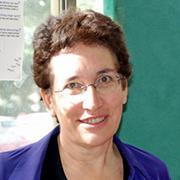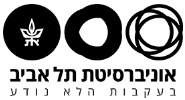Books (including editing)
Stavy, R., & Tirosh, D. (2000). How students (mis-)understand science and mathematics: Intuitive rules. NY, USA: Teachers College Press.
English, L., Bussi, M., Jones, G., Lesh, R., & Tirosh, D. (2002)(Eds.). Handbook of international research in mathematics education. NJ: Mahwah: Lawrence Erlbaum.
English, L., Bussi, M., Jones, G., Lesh, R., Sriraman, B., & Tirosh, D. (2008) (Eds.). Second handbook of international research in mathematics education. NJ: Mahwah: Lawrence Erlbaum.
Tirosh, D. (2008) (Ed.). Tools and processes in mathematics teacher education (Vol. 2). International handbook of mathematics teacher education. Rotterdam, Netherlands: Sense.
Levenson, E. Tirosh, D., & Tsamir, P. (2011). Preschool geometry: Theory, Research, and Practical Perspectives. Rotterdam, the Netherlands: Sense.
Refereed Journals
English
Fischbein, E., Tirosh, D., and Hess, P. (1979). The intuition of infinity. Educational Studies in Mathematics, 10, 3-40.
Graeber, A., Tirosh, D., and Glover, R. (1989). Preservice teachers’ misconceptions in solving verbal problems in multiplication and division. Journal for Research in Mathematics Education, 20, 95-102.
Tirosh, D., and Graeber, A. (1990). Evoking cognitive conflict to explore preservice teachers’ thinking about division. Journal for Research in Mathematics Education, 21, 98-108.
Even, R., and Tirosh, D. (1995). Subject-matter knowledge and knowledge about students as sources of teacher presentations and subject matter. Educational Studies in Mathematics, 29, 1-20.
Tirosh, D., and Tsamir, P. (1996). The role of representations in students’ intuitive thinking about infinity. International Journal of Mathematics Education in Science and Technology, 27, 33-40.
Tirosh, D., and Stavy, R. (1996). Intuitive rules in science and mathematics: The case of “everything can be divided by two”. International Journal of Science Teaching, 18, 669-683.
Stavy, R., and Tirosh, D. (1996). Intuitive rules in science and mathematics: The case of “more of A-more of B”. International Journal of Science Teaching, 18, 653-667.
Tirosh, D., Even, R., and Robinson, N. (1998). Simplifying algebraic expressions: Teacher awareness and teaching approaches. Educational Studies in Mathematics, 35, 51-64.
Tirosh, D., and Stavy, R. (1999). Intuitive rules: A way to explain and predict students’ reasoning. Educational Studies in Mathematics, 38, 51-66.
Tirosh, D. (2000). Enhancing prospective teachers’ knowledge of children’s conceptions: The case of division of fractions. Journal for Research in Mathematics Education, 22, 125-147.
Babai, R., Brecher, T., Stavy R. & Tirosh D. (2006). Intuitive interference in probabilistic reasoning. International Journal of Science and Mathematics Education, 4, 627-639.
Tirosh, D. (2006). (Editorial). Pygmalion in mathematics teacher education. Journal of mathematics teacher education, 9, 3-8.
Tsamir, P., Tirosh, D., & Levenson, E. (2008). Intuitive non-examples: The case of triangles. Educational Studies in Mathematics, 69, 81-95.
Tsamir, P., Tirosh, D., Tabach, M. & Levenson, E. (2010). Multiple solution methods and multiple outcomes – Is it a task for kindergarten children? Educational Studies in Mathematics, 73, 217-231.
Tabach, M., Barkai, R., Tsamir, P., Tirosh, D. & Dreyfus, T. (2010). Verbal justification – is it a proof? Secondary school teachers' perceptions. International Journal of Science and Mathematics Education, 8, 1071-1090.
Tirosh, D., Tsamir, P., Levenson, E., & Tabach, M. (2011). From preschool teachers' professional development to children' knowledge: Comparing sets. Journal of Mathematics Teacher Education, 14, 113-131.
Tabach, M., Levenson, E., Barkai, R., Tsamir, P., Tirosh, D., & Dreyfus, T. (2011). Secondary school teachers' knowledge of elementary number theory proofs: The case of general cover proofs. Journal of Mathematics Teacher Education, 14, 465-481.






